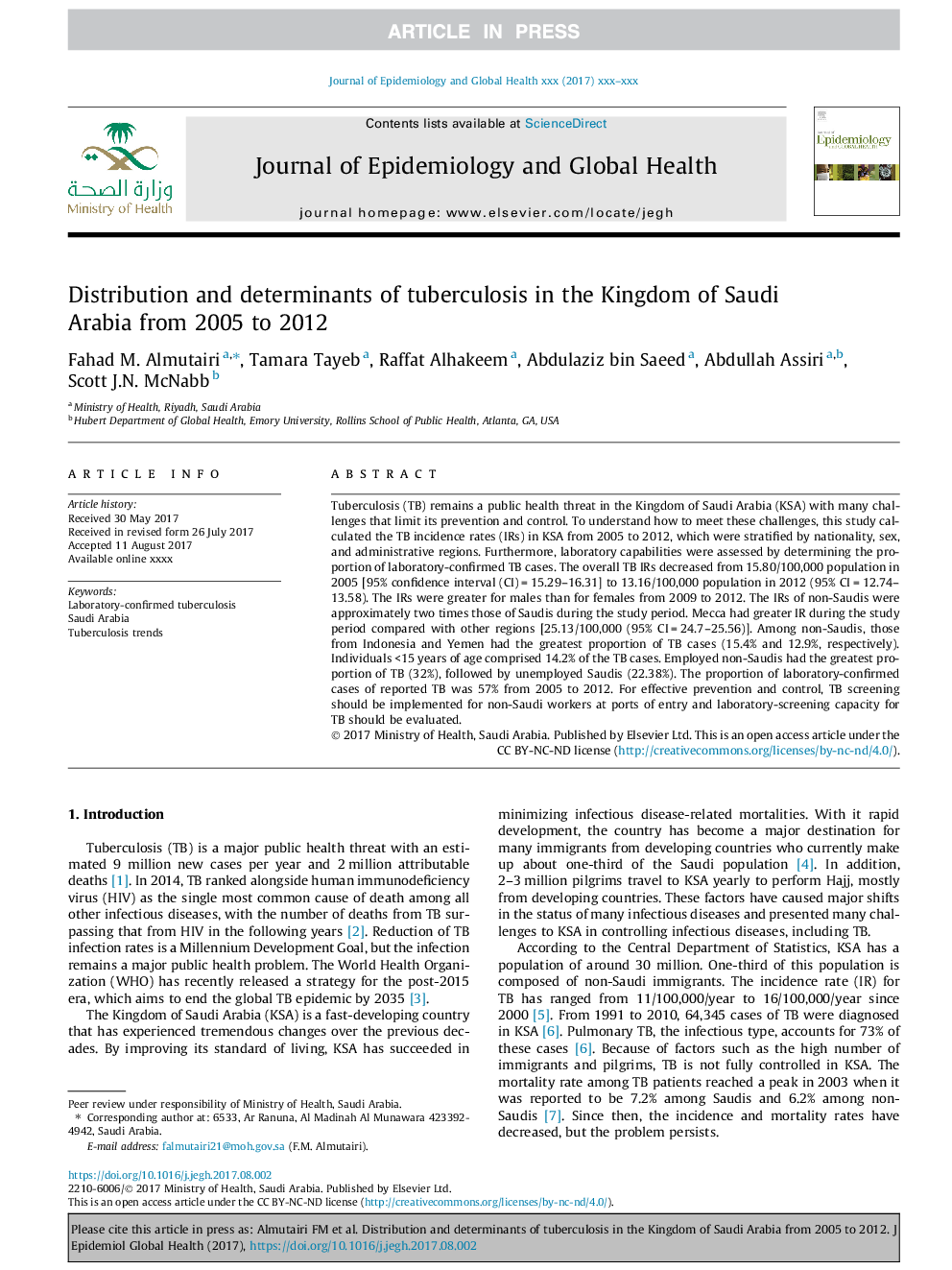| Article ID | Journal | Published Year | Pages | File Type |
|---|---|---|---|---|
| 8733293 | Journal of Epidemiology and Global Health | 2018 | 6 Pages |
Abstract
Tuberculosis (TB) remains a public health threat in the Kingdom of Saudi Arabia (KSA) with many challenges that limit its prevention and control. To understand how to meet these challenges, this study calculated the TB incidence rates (IRs) in KSA from 2005 to 2012, which were stratified by nationality, sex, and administrative regions. Furthermore, laboratory capabilities were assessed by determining the proportion of laboratory-confirmed TB cases. The overall TB IRs decreased from 15.80/100,000 population in 2005 [95% confidence interval (CI)Â =Â 15.29-16.31] to 13.16/100,000 population in 2012 (95% CIÂ =Â 12.74-13.58). The IRs were greater for males than for females from 2009 to 2012. The IRs of non-Saudis were approximately two times those of Saudis during the study period. Mecca had greater IR during the study period compared with other regions [25.13/100,000 (95% CIÂ =Â 24.7-25.56)]. Among non-Saudis, those from Indonesia and Yemen had the greatest proportion of TB cases (15.4% and 12.9%, respectively). Individuals <15Â years of age comprised 14.2% of the TB cases. Employed non-Saudis had the greatest proportion of TB (32%), followed by unemployed Saudis (22.38%). The proportion of laboratory-confirmed cases of reported TB was 57% from 2005 to 2012. For effective prevention and control, TB screening should be implemented for non-Saudi workers at ports of entry and laboratory-screening capacity for TB should be evaluated.
Keywords
Related Topics
Health Sciences
Medicine and Dentistry
Health Informatics
Authors
Fahad M. Almutairi, Tamara Tayeb, Raffat Alhakeem, Abdulaziz bin Saeed, Abdullah Assiri, Scott J.N. McNabb,
